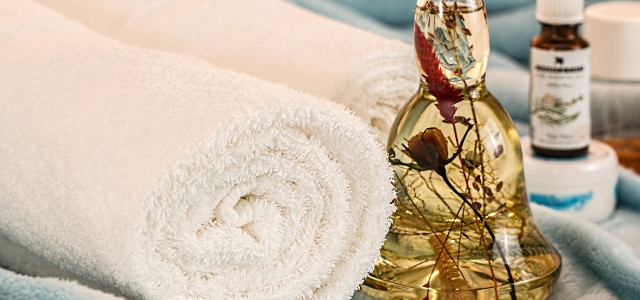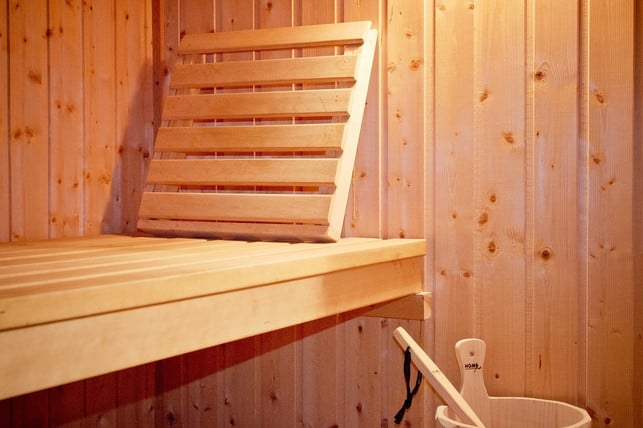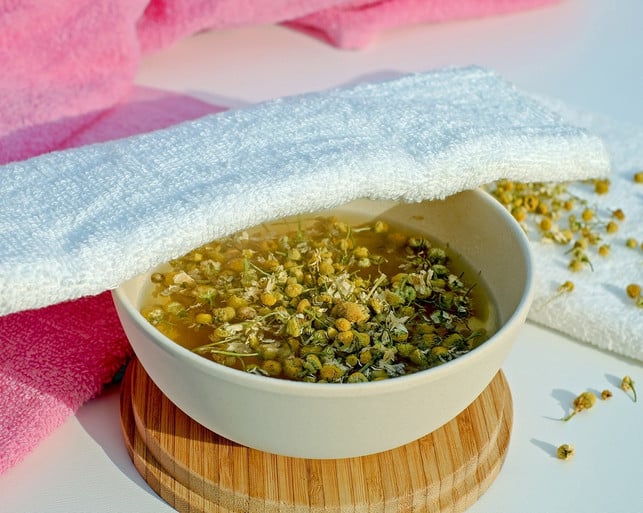
A warming steam bath is a proven home remedy for various ailments. In the Arab world and Turkey it is part of the bathing culture. Here you will find out how a steam bath works and how it differs from the sauna.
Steam baths already existed in the time of the ancient Romans. Hamams were also very popular in the former areas of the Ottoman Empire (such as Turkey or Iran). The baths have different designs and names all over the world: mist sauna, sweat lodge, the Russian banya, the Japanese sento or the Austrian caldarium.
You can find steam baths in many hotel spa areas, special wellness and sauna areas, swimming pools and some fitness studios. A visit to the steam bath works similarly to a visit to the sauna: wearing nothing but a towel, you sit in an enclosed room where it is around 43 to 46 degrees warm.
However, in a steam bath there is additional water vapor, which increases the humidity in the room. Here you can relax and unwind. Like a sauna session, you should then take a cold alternating shower: you should repeat the change between hot and cold several times.
What you should consider before visiting the steam bath:
-
Shower beforehand. This way you don’t bring bacteria into the room.
- Always put a towel underneath. After all, you sit and sweat where other people will later sit.
-
Take your slippers with you. Due to the high humidity, the risk of germs and especially athlete’s foot is very high.
Advantages of the steam bath: This is why it is good for your health

(Photo: CC0 / Pixabay / EstonianSaunas)
Steam baths can help with many different health problems – including as a preventive measure. Because the heat in the steam room is so great, the body activates various mechanisms to cool itself down: the blood vessels in the skin dilate, the body produces sweat and lung activity increases.
A steam bath can help with the following problems:
-
Immune diseases: According to Heidrun Holstein from the Baden-Württemberg consumer advice center, the steam bath puts the body into an “artificial fever”. This stimulates the immune system to kill pathogens.
-
Clear skin: The blood vessels in your skin expand and your pores also open. The sweat produced on the face helps cleanse the skin.
-
Colds and respiratory diseases: The mucous membranes are moistened; the addition of essential oils such as eucalyptus oil increases this effect. Children with bronchitis had significantly fewer breathing problems after 24 hours. The disease also healed much faster.
-
High blood pressure: As part of a study, athletes released a hormone (aldosterone) in the steam bath that noticeably lowered their blood pressure. Attention: Anyone who suffers from cardiovascular problems should still be careful: this system in particular is stressed in the steam bath.
-
Calming effect: In the same study, the researchers found that the stress hormone cortisol also decreased in the athletes.
-
Muscle tension: The very warm temperature in the steam bath followed by a cold contrast shower greatly stimulates blood circulation. It also ensures that the muscles relax.
-
Prevents muscle soreness: Studies have shown that a steam bath can prevent annoying muscle soreness. The moist heat penetrates deep into your muscles and restores their performance more quickly.
-
Joint problems: Heat is said to help with joint problems. It is said to increase flexibility and joint strength.
When to avoid a steam bath

(Photo: CC0 / Pixabay / Pexels)
A steam bath is not suitable for everyone: If you are healthy and fit and exercise regularly, you don’t have to worry. However, there are risk groups who should not take steam baths.
-
People with severe cardiovascular problems: As a steam bath beginner with high blood pressure or a weak heart, the steam bath can overwhelm your circulation. If you suffer from heart failure, you should discuss a visit to the steam bath with a doctor beforehand. If you are experienced in using the sauna or steam bath, you can of course continue to maintain this habit. Basically, a steam bath is very healthy for the heart.
-
If you have inflammation of the organs or flu-like infections, you should not increase your body temperature any further. More about it here:
- Anyone suffering from HIV or another immune deficiency should be careful in the steam bath. Germs can easily form in the humid environment and are not killed by the temperature.
-
Pregnant women should always talk to a doctor about whether going to the steam bath is recommended.
-
Children usually have no problems in a sauna or steam room. In Finland, sweating together has been a “family affair” from the start. But it is recommended to keep the steam bath session short.
Sauna or steam bath – the differences

(Photo: CC0 / Pixabay / TheUjulala)
There are two big differences between a steam room and a sauna:
-
Temperature: A sauna has a very high temperature of 70 to 100 degrees Celsius. In a steam bath it is usually only between 40 and 60 degrees.
-
Humidity: The air in a sauna is very dry. In the steam bath, on the other hand, the humidity is extremely high – up to 100 percent. So high that droplets form in the air and on the skin.
According to a Polish study, there is another difference between the two sweat lodges: To combat overheating, the body uses various cooling mechanisms. However, when the air is too humid, sweat from the skin has a harder time evaporating. This causes the body to heat up more – even though a steam bath has a lower temperature. The male test subjects showed the following differences in the steam bath:
- an increased pulse and blood pressure
- an increased rectal body temperature
- an increased feeling of stress due to the heat
- a smaller decrease in body weight
If you want to lose weight or dehydrate, a dry sauna will help you better: The test subjects lost twice as much weight after the dry sauna.
Note: Whether it’s a sauna or a steam room, you shouldn’t spend more than 15 minutes in either one. Your body temperature should not rise by more than one degree Celsius. This could quickly become dangerous, especially for heart patients or people with poor circulation. In any case, a stay in the sauna or steam bath for just eight to twelve minutes is recommended. Afterwards you should always take a contrast shower (not too cold for risk groups and beginners). The process can be repeated up to three times.
For at home: facial steam baths

(Photo: CC0 / Pixabay / Couleur)
Facial steam baths are an old home remedy that is primarily intended to help with two types of complaints:
- Respiratory diseases (e.g. cold, bronchitis, sinusitis)
- Skin problems (e.g. pimples, irritated skin, clogged pores)
The fine droplets of the hot and moist air from the steam bath reach the mouth and throat, nose and sinuses. This allows them to help loosen mucus. After a facial steam bath, we often cough more quickly and our noses run.
A facial steam bath with chamomile is also said to help relieve inflammation. Chamomile is said to have an anti-inflammatory effect. Various essential oils such as eucalyptus oil can also provide relief. However, asthmatics and children should avoid these oils.
If you have bad skin, a steam bath should open the pores and moisturize the skin. You can also use chamomile to combat inflammation in the skin, but various herbs can also help. Always remember to clean your face beforehand and, above all, remove any make-up.
Here we will explain to you how to prepare a steam bath for clear skin:
Read more at Utopia:
- Make your own face mask: Natural recipes for clear skin
- 9 common mistakes that make colds worse
- Sauna properly: You should pay attention to this in the sauna
Edited by Annika Reketat
** marked with ** or orange underlined Links to sources of supply are partly partner links: If you buy here, you are actively supporting Techzle\.com, because we then receive a small part of the sales proceeds. More info.